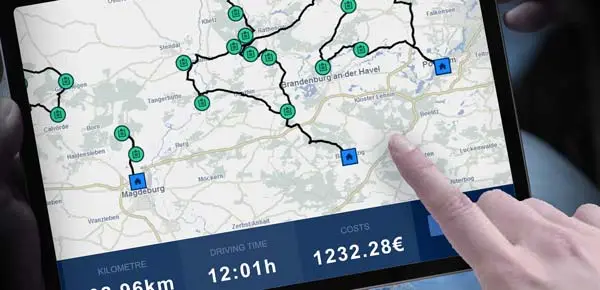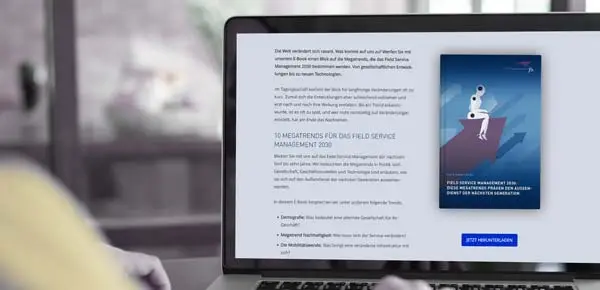
BLOG / SOLUTIONS · ENGINEER DIARY MANAGEMENT
CUT THESE 3 COSTS WITH ENGINEER DIARY MANAGEMENT SOFTWARE
25 March 2022 · James Alex Waldron
Even if a business is certain that it's solved deployment with regular rounds and 24 hour cover, to truly optimise field engineers you’ll need a connected scheduling and route planning platform. Optimised deployment with live field data can stop cost factors continuing to risk service disruption and mitigate damage to satisfaction scores. Here, we look at how to track and manage three costs with a connected engineer diary management software and prevent risk to SLAs and profitability.
CUT FUEL COSTS IN FIELD SERVICE
The average difference in diesel cost for a Volkswagen Transporter van to drive 20K miles in a year?—at least £1000 more versus 2021. When your workload is rising, how is it possible to drive fewer miles and remain productive? In short, field engineers must be deployed using optimised scheduling and routing, connected with mobile diary software.How this works in reality:
- Precise appointment location – swapping Post Code/ZIP Codes for geocoded address data
- Appointment type – which engineer skills and parts are required
- Vehicle type and availability – calculating whether engineer transport could be offered by car, van, heavy goods vehicle
- Time of day driving speeds – real-world data to determine if the engineer is likely to be held in traffic with an engine running
- Favouring overlapping work areas – removing engineer ‘patches’ meaning countless alternative schedules are now available
- In-shift re-optimisation – location and progress of connected engineers appear live and can be re-routed within seconds
- Cost-optimised appointments – accounting for these parameters, the platform will determine if the offered window complies or breaks the SLA, leaving the final choice to the dispatch team
Read more: How Wolf Heating Technology drives 10% fewer miles every year
CUT COSTLY REPEAT APPOINTMENTS
Amongst the most recognised industry SLAs are TTR (time to respond) and TTF (time to fix). Often, these are directly matched to financial penalties. Not achieving these leads to inefficient productive hours and utilisation and increases costs through unforeseen 'recovery' scheduling. What isn’t immediately obvious is at best, the cost to the business spreads into Accounts departments issuing credit notes. At worst, contracts are not renewed.It's obvious that predictive and scheduled maintenance is not always possible, and some field operators grow their businesses through out-of-hours orders. However, the balance is tipped into cost when a customer's requirement for reasonable business continuity quickly grows into a backlog. SLAs come into focus when a first-time-fix is not achieved. Engineer diary management software will gather and exchange usable data to ensure repeat visits are minimised, providing transparency and actionable insights for all stakeholders.
How the connected software controls cost:
- The CRM receives a work order either through a call centre or self-service customer portal
- The scheduling platform calculates against company parameters, including engineer skills, parts, time-sensitive SLA
- The algorithm creates availability during the shift and (as the single source of truth) the account notes are fed via the CRM into the dispatch window.
- The scheduler has the option to proceed. They accept the proposal and notify the customer via a push notification
- The engineer is rerouted via their device, automatically supplied a route optimised for the best outcome
- With the diary software, the engineer announces their arrival to stakeholders, and has the account and case history available
- For transparency, a photo of either the completed work, or failed (beyond repair) asset is linked back to the work order and written into the CRM
In this example, the field engineering company has protected their business in two ways. Firstly, they have met the SLA and can be sure that the software produced an optimised result to dispatchers (including fuel savings). Secondly, with immediate evidence of the work undertaken, the customer may be presented with confirmation of a first-time-fix, or that the asset requires replacement and are now unlikely to place another job request (and add cost to your backlog).
Read more: How British Engineering Services achieved a 15% productivity increase
BOOK YOUR SCHEDULING TEST TODAY
How can Project Teams ensure their Field Optimisation Software shortlist stands up to their SLA objectives? What must you demand from a considered provider? This critical stage of the selection process must be completed before final evaluation and contract.The most important test for optimisation software.
CUT FIELD ENGINEER TURNOVER (CHURN)
In the field service industry, losing skills can have a devastating effect on your productivity and wider morale. When an engineer has a familiarity with an account location or specific asset, the potential to reach greater satisfaction scores is heightened. If a single engineer can complete twenty orders in a working week, then that’s the potential to lose over 1,000 appointments in a year. How does engineer diary management software help you to retain staff? Companies that can display a clear investment in tools to assist field engineers and make use of best-of-breed technology record high employment satisfaction.How field software cuts turnover and recruitment costs:
- Transparent decision making – by including all employees in the rollout of your scheduling and deployment software, you can (with data) definitely answer the question as to why appointments change in-day, if these are the best routes, if an operative needs to come in early, or finish late. All calculations are stored in the cloud.
- Remove time pressures – by using your software to define real-time schedules and allow AI to determine realistic appointment windows and appropriate travel times
- Remove paperwork – by going paperless, you not only make information clear, readable, and searchable; you are choosing to give autonomy to your engineers. Mobility features, such as a personal interaction with a customer ('time of arrival') improves ownership of today's workload
- Identify training needs – if an engineer is denying jobs or is questioning why they frequently receive certain job types, this is likely linked to a skills parameter. They may be happy to continue this way, however it could threaten productivity
- Improve work/life balance – build in lunch breaks, reduce driving and depot visits, and stop engineers being scared to report illness for fear of the knock-on effects ('presenteeism')
- Share success metrics – connecting engineers to the bigger picture is always tough when they're on the road and may only visit a depot a few times a week. Place clear reporting of your business' health and customer service scores into the hands of the engineers who drive these factors
Read more: How VELCO used dynamic field scheduling for targeted performance improvement
CUT COSTS AND IMPROVE STANDARDS WITH ENGINEER DIARY MANAGEMENT SOFTWARE
To gain an understanding of tools to optimise the field experience and manage risk for your workforce and customers book a short discussion or contact us at info@fastleansmart.com.Read more:
Strengthen Field Service Optimisation with an Ecosystem model
Cost control: Reactive maintenance with Field Service Management software
Field force security with Field Service Safety software

JAMES ALEX WALDRON
UK Marketing Manager
+44(0) 1183 800189
Send email
James Alex Waldron has worked in written communications for over 10 years. Since 2021, he has written for FLS and the Solvares Group on the topics of digital field service transformation and mobile workforce management, and regularly provides insight to the industry press.




